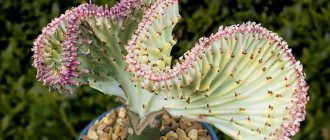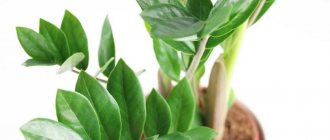Caring for a plant at home
- Lighting. The plant is accustomed to dim light and partial shade. Therefore, it is recommended to place it on a western or eastern window sill. However, I have often heard about people who very successfully grow asparagus in a north-facing window. But in this case, be careful: sometimes the leaves turn pale in such lighting, and the shoots stretch out.
- Temperature. From spring to autumn, the vine needs about 23 degrees and fresh air. If you cannot ventilate the room often, place it on the balcony (unless, of course, the sun burns there and there are no drafts). In winter, it is advisable for the plant to have a dormant period, keeping it at 10-12 degrees. If you don’t have a cold room, add additional lighting, otherwise it will stretch out.
- Air humidity. It should be moderate. If the room is hot, spray the vine. You can also periodically take it to the bathroom and take a warm shower (but wrap the pot in cellophane so as not to waterlog the soil).
- Watering. During the active growing season of the plant (March-September), do not let the soil in the pot dry out completely. Of course, it shouldn’t be wet all the time, but a little damp is a must. In winter (if you keep the pot cool), allow the soil to dry out, otherwise the roots will begin to freeze and rot. Always reserve water for irrigation and spraying.
- Nutrition. From spring to early autumn, you can buy a complex mineral composition for your flowerpot, created for decorative deciduous houseplants. Dilute it twice a month.
Here's what else a woman who has been growing sickle-shaped asparagus for many years says about her flowerpot:
Trimming
Crescent asparagus can grow at an amazing rate. You fell asleep in the evening, everything was fine, you wake up - an extra 25 centimeters of vines have appeared from somewhere. In this way, the plant can quickly take over, if not the whole world, then the entire window - for sure.
Fortunately, this ornamental crop tolerates pruning well.
Asparagus can be arranged either in the form of a lush bush or in the form of a vine. But in the latter case, immediately think about the supports on which you will eventually begin to direct the lengthening plant.
In addition to shaping the flowerpot, sanitary pruning is also needed. That is, remove diseased and weak shoots in a timely manner. And it’s better to get rid of too bald, ugly branches.
Transfer
Asparagus should be transferred to a new pot in early spring, before growth begins.
Young plants can be “relocated” every year, but old ones can be “relocated” if the roots begin to stick out of the pot or the water when watering begins to seep into the water poorly (which will mean that there is almost no soil left there - all the roots are entwined).
Asparagus should be planted in airy but nutritious soil of weak or neutral acidity.
Some people claim that a flowerpot will grow well in an all-purpose store-bought mixture (as long as you don't compact it too much when planting). But either I didn’t come across a good one, or I’m a perfectionist, I don’t like such soils. I prefer to mix the soil for the flower itself from 4 parts deciduous soil, 2 parts turf soil and 1 part sand.
Immediately take a wide and deep pot, even if your sprout is still small. Asparagus is a “creature” that can fill its “house” very quickly. Moreover, as they grow, the roots of the flowerpot form small root crops in which they store water. When I first saw them during the transplant, I was scared, I thought it was a terrible disease. But this is the norm.
And of course, don’t forget about drainage to the bottom. I recommend using something large (for example, broken shards).
Important! Sometimes during transplantation a couple of tubers break off. This is not very scary - some gardeners even remove part of the “potatoes” if the rhizome is difficult to place in a new pot
But you shouldn’t get too carried away with this - after all, here the flower stores a supply of vital substances.
Treatment and prevention
If you forget to spray the plant, and there is constantly dry air around the flowerpot (especially in winter, from the radiator), spider mites may appear on it. As soon as you see insects scurrying along the vine or traces of their vital activity (small whitish cobwebs), immediately bathe the vine under a hot shower, making sure that the water temperature is no hotter than 50, but not colder than 43 degrees.
If the water procedure does not help get rid of the pest, buy poison (say, Actellik) and treat the plant with it. It is advisable to do this in the fresh air, since the smell of this substance (regardless of the name and manufacturer), frankly speaking, is not very good.
The plant may also suffer from the following diseases:
- the tips of the leaves dry out (the air is too dry, the bush is hot or it’s already sunburned - check if direct sunlight is falling on the plant);
- root rot (you regularly rewater the flower).
Landing
It doesn’t matter where you got the plant - in a nursery, bought it in a store or took it from friends, when you come home you need to replant it. You need to prepare the soil and choose the right size pot
Choosing a pot
When purchasing flowerpots, you should give preference to natural “breathable” material – clay and without varnish.
If we talk about the size of the pot, then you should pay attention to the plant itself and its size. If asparagus is bought in a store, then you can also buy a flowerpot for it there, which should be 1 cm larger than the container in which the seedling is located
If asparagus is bought in a store, then you can also buy a flowerpot for it there, which should be 1 cm larger than the container in which the seedling is located.
You should not buy a pot that is too large, as the soil that is not used by the plant will turn sour, and this may cause the plant to die.
As for the shape of the pot, it can be any, depending on your preferences.
What should the soil be like?
The soil for this plant should be slightly acidic, but very light and permeable. You can buy the soil mixture at the store or prepare it yourself. To do this take:
- 2 parts of turf land;
- 4 parts leaf soil;
- 1 part washed coarse river sand.
How to transplant?
Transplantation of sickle-shaped asparagus is carried out as follows:
- We prepare the drainage - pour small crushed stone or expanded clay onto the bottom of the pots with holes.
- Cover the drainage with a small layer of soil.
- Carefully, so as not to damage the roots, remove the plant from the container in which it was located in the store. It is worth turning the plant over and gently knocking on the edges and bottom.
- As soon as the plant is removed from the pot, its roots must be carefully removed from the soil and inspected. We remove the damaged areas along with the broken branches.
- We lower the plant into a new pot, straightening the roots and adding soil. You can’t compact the soil, but there shouldn’t be any air voids in the pots, so when planting, you need to shake the container a little.
- Water the flower and place in a dark, cool place for 2-3 days.
Then the asparagus can be transferred to a permanent place.
Choosing a variety
The asparagus asparagus flower belongs to the genus of herbaceous vines and is a heat-loving plant. At home it grows and reproduces excellently. In an adult plant, the branches grow so densely that they form a semblance of a bride's veil.
Therefore, this variety is also called wedding or veil. Interestingly, in its homeland, Australia, it is considered a weed, and farmers there fight it mercilessly.
Asparagus dense-flowered is an evergreen flowering plant. There are small thorns on its branches. The plant is not afraid of direct sunlight. It blooms with small white or light pink flowers. They smell amazingly pleasant, and this smell spreads far around.
Meyer's asparagus has more than one name, but is more commonly called foxtail fern or asparagus fern. Indeed, its branches, strewn with thin and long leaves, resemble the branches of a fern.
This plant is extremely popular among florists. It is used not only in landscape design, but also for decorating bouquets and flower arrangements. The plant blooms with small white flowers. Its fruits are also small and have a bright red color.
Cwebe is the only asparagus variety that is completely intolerant of solar ultraviolet radiation. It can only be grown in the shade.
Crescent asparagus is native to South Africa. There it is mainly grown to create hedges. Falcatus has a very dense crown and grows quickly, without fear of repeated pruning.
Asparagus racemosus is called a healer of a hundred diseases. It fully deserves this name, since it truly is a healing plant. It is used in the treatment of peptic ulcers, in addition, it strengthens the immune system and removes toxins from the body. For garden asparagus, planting and care in open ground are the same as for growing indoor varieties.
Pinnate asparagus differs from other species in that its fruits are not red, but dark blue, to black. No more than three seeds ripen in each plumosus berry. It is also called the thinnest.
What does sickle asparagus look like, what family does it belong to?
Crescent asparagus belongs to the Asparagus family, which has more than 200 varieties of herbaceous and shrub plants, including climbing and groundcover species. Originating from eastern and southern Africa.
Asparagus in summer cottages
The branches are erect or slightly deviated, some shoots are twisted. Forms small sucker shoots. The stems are green and may acquire an anthocyanin (purple) hue at the base. The height of the plant at home reaches 70-90 cm. The leaves are elongated, lanceolate, and mostly straight at the ends of the shoots. Short leaves closer to the center of the bush may be slightly curved in the shape of a sickle. Length from 4 to 12 cm, width 5-10 mm.
Shoots with sickle-shaped leaves
Additional Information! The rhizome grows quickly, filling the volume of the container. Compact tubers may form in the center. This indicates good growth and development.
Common varieties
In addition to the Asparagus falcatus species, the following varieties are widely used:
- pinnate asparagus;
- Sprenger asparagus;
- Meyer's asparagus.
A variety of asparagus grows in open ground in the temperate climate zone - asparagus officinalis.
Medicinal properties
Varieties contain the amino acid asparagine. Vegetables contain a lot of vitamins and mineral salts. Asparagus officinalis extract is used for kidney, heart and vascular diseases, diabetes, and to lower blood pressure. Infusions of roots and herbs are used for diseases of the kidneys and bladder, allergies, dysentery, and epilepsy.
Important! No parts of the sickle asparagus plant are eaten, only young shoots of asparagus officinalis are edible.
History of the emergence of culture
The genus has been known to mankind for at least 2 thousand years. Due to the beauty and diminutiveness of the leaves, the plants were noticed and actively propagated. In ancient Greece, asparagus shoots were woven into the wreaths of the bride and groom. In Egypt, asparagus shoots were first used as a vegetable. He came to Russia in the 17th century.
Tips for a florist
All species have one thing in common: the brighter the lighting in the room where they grow, the more saturated the green of their foliage turns out. However, all of them, except for the Sprenger asparagus, do not tolerate direct sunlight.
For this reason, pots with these plants are usually placed on walls where the sun's rays do not penetrate too actively. If you place the pot on a windowsill, you will have to protect the plant from the sun with a screen or very thick tulle.
After winter dormancy, keep the flower in low light. This is necessary for him to “wake up” comfortably and adapt to the light. If you want to keep him on the veranda or loggia all summer, then accustom him to street life gradually.
For the first time after winter, leave the plant outdoors for one hour and then return it indoors. The next day, double the time, and so on.
Asparagus are moisture-loving plants. Drying out the soil leads to their immediate death. Therefore, make sure that the surface of the earth is always moist. On hot days, as well as during the heating season, do not forget to spray the plant with water from a spray bottle. Water with settled water.
In winter, reduce watering, but do not allow the top layer of soil to dry out completely. From the beginning of spring, as soon as young leaves begin to appear on the branches, increase watering, and during the period of active growth, make it plentiful.
In the warm season, water asparagus every other day. The soil should always be moist to the very bottom. During this time, periodically pour warm water over the asparagus from the shower. This will make the foliage more vibrant.
Other problems and their solutions
Despite the fact that sickle asparagus is unpretentious in care, some problems may arise when growing it:
- Leaves turn yellow and fall off; the cause may be pests or insufficient watering. It is worth noting that if the plant sheds its foliage, it will not be possible to return the stems to their decorative appearance; pruning will have to be done. The solution to the problem is timely watering or treating asparagus with insecticides.
- The leaves have turned yellow and brown spots have appeared on them - perhaps the asparagus is infected with gray rot. It is necessary to reduce watering and transplant the flower into pre-treated soil.
- The plant has lost its decorative appearance - pale yellow spots have appeared on the foliage, and the pot stands on the southern windowsill. Perhaps the asparagus has sunburn or the air in the room is too dry.
If you provide proper care, you will soon have a real jungle at home.
Crescent asparagus is a plant that our grandmothers grew because it requires minimal care. The flower quickly adapts to its environment, so every flower lover can grow this elegant and beautiful plant in an apartment.
Botanical description of Asparagus
Asparagus (Asparagus) is a perennial evergreen ornamental plant in the form of a subshrub or vine.
The root system of the plant is well developed, going deep into the soil. The plant first begins to form a powerful underground shoot from the bud, from which a whole bunch of above-ground shoots subsequently grows.
Asparagus stems are soft and tender. The shoots are quite long. Their length reaches up to 1.5 meters. The peculiarity of shoots is that they are active participants in photosynthesis. The stems are densely covered with cladodes - thin needle-shaped branches growing in bunches on long shoots. It is these branches that are mistaken for scale-like foliage.
Flowers bloom on young shoots. They can be either solitary or collected in small corymbose inflorescences. However, we must remember that Asparagus blooms in the wild; as for home conditions, flowering is extremely rare.
Flower buds form in the axils of the leaves. The symmetrical corolla can be bisexual or unisexual. It consists of 6 petals, which are arranged in 2 tiers, as well as 6 thread-like stamens. The ovary is three-locular, it is located in the center of the flower, and has a short column with a stigma. After flowering is completed, small round berries with small seeds begin to ripen.
When and how does it bloom
In an apartment, Sprenger's asparagus blooms often and profusely; it is enough to provide it with good care.
Asparagus blooms
Types of flowers
Flowers appearing on branches can be either male or female. The flowers are small, milky peach in color.
Flowering period
The flowering period lasts a long time. The first inflorescences appear in late spring or early summer. Flowering usually ends in autumn.
Trimming
Asparagus pruning is carried out for several purposes:
- eliminate damaged diseased branches;
- make the bush thicker.
The peculiarity of this flower is that the cut branches will no longer grow in length. In this case, the growth of dormant buds at the base of the bush is activated.
Growing asparagus at home
Preparation
The most favorable time for planting asparagus seeds is spring. Before sowing, it is recommended to keep the seeds in warm water from the filter for two days.
Prepare in advance the box or container in which you plan to plant the seeds and fill it with soil.
You can purchase universal soil for indoor plants at any flower shop, or you can make your own soil mixture.
To do this, you will need to mix sifted turf soil with river sand and vegetable humus. Moisten the soil thoroughly and then place the asparagus seeds there.
Landing
The seeds should be placed at a distance of three centimeters from each other, compacted into the ground and sprinkled with a small amount of sand or earth, then covered with glass or a plastic bag.
You can place the container with the seeds on the window, but asparagus seeds will sprout just fine in the dark.
ATTENTION! Provide the soil with sufficient air access, otherwise it may turn sour!
Remember to maintain the air temperature at eighteen degrees. The soil in which the seeds are located should be periodically sprayed with water to keep it moist.
Sprouts usually appear two to three weeks after planting the seeds. When their height reaches ten centimeters, you can plant them in separate pots with good drainage at the bottom.
IMPORTANT: Young asparagus should be replanted once a year, and an adult plant can be replanted once every two to three years.
The necessary conditions
The pot should be placed in partial shade, as direct sunlight can cause burns to the plant.
In summer, asparagus should be kept at a temperature of twenty to twenty-four degrees Celsius, and in winter - from fifteen to eighteen.
In summer, they require abundant watering, but do not allow water to stagnate so that the plant does not begin to rot. In winter, watering should be reduced, but do not forget about regular spraying of asparagus.
IMPORTANT! For irrigation, soft, settled water should be used.
In addition to ensuring optimal temperature and humidity conditions, you should not neglect regular feeding of the plant containing nitrogen and iron.
Despite appropriate conditions and care, asparagus can be overcome by diseases and pests, about which you can read in more detail here.
Reproduction methods
Growing from seeds
If asparagus grown indoors flowers, it may produce fruits and seeds, but only if the flowers are artificially pollinated. It is recommended to sow the seeds immediately after harvest (between January and March).
Fill the container with a substrate consisting of peat and sand (1:1). Moisten it and then sow the asparagus seeds. Cover the seeds with sticky film (glass) and place them on a well-lit windowsill. As soon as condensation forms on the surface of the lid, open it briefly.
Do not forget to spray the soil with a spray bottle in a timely manner; The optimal temperature for seed germination is about 22 degrees. The first shoots should appear in 25-30 days. When the young plants reach a height of about 10 centimeters, they should germinate.
Seedlings are planted in separate containers in the first weeks of summer; for this, a soil mixture is used, consisting of humus, leaf and turf soil, as well as peat and sand, which are taken in equal proportions. In the future, they are cared for in the same way as adult shrubs.
Cuttings
Indoor asparagus seedlings are harvested in early spring; for this it is necessary to cut several shoots from the bush. The optimal length of cuttings is from 8 to 12 centimeters. For rooting, they are planted in a container filled with sand.
Place the cuttings in a well-lit place, cover them with film (glass) and provide them with a temperature of about 21-22 degrees. Don't forget to water them at the right time and ventilate them.
If done correctly, they should take root in about 4-6 weeks. When the young plants grow a little, they can be transplanted into their own pot and covered with mature soil.
Dividing the bush
Depending on the size of the bush, when transplanting it can be divided into 2, 3 or 4 parts. Each of them should be planted in a separate pot filled with the soil used for replanting asparagus (see above).
If necessary, prune the roots of propagated plants.
Varieties of tropical plant
Currently, there are more than 200 species of graceful perennial. This species diversity turns asparagus, a mix of which is very easy to create, into an indispensable plant for floristry. The following varieties are considered the most suitable for cultivation at home.
Pinnate asparagus or bristle-shaped asparagus (Asparagus plumosus)
A strongly branching subshrub, native to the tropical forests of Africa, with soft central shoots that have a slight bend, which gives the appearance a special decorative effect. The stems are covered with scaly leaves 0.5 cm long, in the axils of which groups of thread-like branches up to 1.5 cm develop.
Due to the lateral shoots located in the horizontal plane, a separate branch has a peculiar resemblance to a fern leaf. During flowering, which is practically not observed in apartment environments, single white flowers bloom.
Asparagus benuissimus
The species is very similar to the previous one, differing only in the structural features of the cladodes: they are thinner, elongated and located much less frequently.
Sprenger's asparagus (Asparagus sprengeri), also known as dense-flowered asparagus
An evergreen creeping perennial that lives wild on the mountain slopes of the South African region. The bare stems, reaching a length of 1.5 m, are covered with scale-like leaves up to 4 mm, surrounding groups of 3-4 slightly curved cladodes 3 cm long.
Flowering is observed when pink or white fragrant flowers bloom, collected in shield inflorescences. The species has characteristic round red fruits. In the literature it is often found under the name Ethiopian asparagus.
Meyer's asparagus (Asparagus meyeri)
A species with single shoots half a meter high, which are very densely covered with phyllocladies developing in different directions. The appearance of an individual shoot is similar to a fluffy brush.
Crescent asparagus (Asparagus falcatus)
A liana-like representative of the culture with lignified stems covered with thorns, reaching in the natural environment 15 m in length with a diameter of 1 cm. The formations in the form of thorns allow it to climb support without any problems. This asparagus, which is easy to care for at home, has shoots with a maximum length of 4 m.
In the upper part of the lateral shoots, covered with scaly, undeveloped leaves, dark green crescent-shaped cladodes up to 10 cm in length develop. The perennial has good pruning tolerance. When flowering, it forms racemose inflorescences consisting of small cream-colored flowers.
Asparagus racemosus
A subshrub with climbing shoots, the length of which reaches 2 m. The name is due to the brush-shaped inflorescences, consisting of bright pink flowers with a characteristic aroma.
Asparagus medeoloides
The liana is distinguished by its tall growth and very strong branching with evergreen cladodes. The peculiarity of the shoots after cutting to remain fresh for a long time without water has determined its popularity among florists.
Asparagus pyramidalis
Subshrub with vertically growing shoots up to 1.5 m tall. The shoots are densely covered with short cladodes, so that from a distance the plant can be mistaken for a juniper.
Asparagus asparagoides
A beautiful climbing perennial with stems 3 m long, which are covered with bunches of cladodes up to 3 cm.
In addition to cultivation in an apartment environment, the following species are suitable for cultivation in open ground for regions with a temperate continental climate:
Benefits and harms
The plant is used as decoration when making flower sets. Thanks to its beautiful lush shoots, it adds charm and splendor to bouquets. The picturesque flexibility of graceful branches looks great in hanging flowerpots.
Meyer's asparagus is used as a hanging plant. Flowering does not cause allergic reactions. To avoid poisoning, it should not be consumed as food for humans or animals. The plant is successfully cultivated indoors. It can often be found in the corridors of offices and schools.
Asparagus is found in regions of the European part of Russia, in the Caucasus and Kazakhstan. Read about the benefits, harm, diseases and cultivation of such types of asparagus as medicinal, white, Sprenger on our Internet portal.
Description of the plant
This type of asparagus even has a special root system. Thanks to specific thickenings, the plant is able to store water and nutrients. The furrowed, sometimes smooth, bare and abundantly branched stems of this plant are surprising in their thinness and threadlike appearance. They are not stable enough and can only maintain a straight shape at the very beginning of growth.
Asparagus Sprenger became famous as one of the best “waterfalls” with ampelous graceful shoots up to 1.5 m long. Classic asparagus of this type have truly arched, even, elegant branches that create delightful green fountains and waterfalls. And the longer they are, the stronger the illusion of the green cascade.
But there are also varieties with straight shoots and with shorter branches that develop in the form of spreading, fountain-like bushes. The filigree beauty of asparagus is ensured by the soft “needles” that they develop instead of real leaves, reduced to tiny scales.
With a length of up to 3 cm, the width of the “needles” is limited to 1-2 mm. They are soft, gather in whorls and give their plant a lacy appearance. Thousands of details create almost airy clouds that you can admire endlessly. Plant height, depending on the variety and growing conditions, can range from 20 cm for the most compact Sprenger asparagus to almost a meter for the best ampelous forms.
Ethiopian asparagus develops with a vaguely defined dormant period. If they are provided with lower temperatures, growth stops completely; if they remain warm, then it only slows down significantly.
A rare pleasure - flowering and fruiting of Sprenger asparagus
This species also claims to be the most beautifully flowering asparagus. True, it is very rare to enjoy the beauty of blooming asparagus in an ordinary room environment; for this, the plants need special conditions.
Flowering usually begins in the fifth year when grown from seeds. The inflorescences are located in the axils of the lateral branches. Sparse racemes and scutes with pinkish round buds bloom from bottom to top.
Strikingly elegant white flowers with six perianth lobes and long stamens decorated with pink-orange anthers seem to create white lace on a green background, only enhancing the elegance of the plant. And the delicate, refined aroma only emphasizes the feeling of unique elegance.
Fruiting for asparagus is not that uncommon, although only a few fruits usually ripen on indoor plants. The main thing is not to forget about the need to artificially pollinate the flowers using a soft brush.
The round “berries” turn red as they ripen, and they look like elegant beads. It is very interesting to observe the color change through all shades of white-fawn-pink to the final cold red. The berries of the plant are poisonous, but they hide seeds with very high germination rates.
Fruiting for asparagus is not that uncommon. Pedro Garcia
Description of a houseplant and its photo
The genus Asparagus includes about 300 species of perennial plants. Africa is considered its homeland; it grows naturally in India, on the Mediterranean coast of Europe, and in the Far East. The first image of the plant dates back to the 3rd century. BC. Even the ancient Egyptians grew this crop and ate it. After all, the asparagus growing in the apartment belongs to the same genus as vegetable asparagus, only to different species. Ornamental asparagus began to be grown a little over 100 years ago.
Asparagus is prized for its delicate, lush greenery.
The culture is distinguished by its species diversity: it is represented by herbaceous plants, large shrubs or vines. Characteristic features of asparagus are branched shoots, small flowers, berry-shaped fruit, and a powerful tuberous root. Most asparagus do not have green leaves; their role is played by flattened needles located in the axils of small scale-like leaves.
Ornamental asparagus belongs to the same genus as vegetable asparagus
With good care, the flower grows up to 40 cm and lives for more than 10 years.
Asparagus adapt well to living conditions; growing them at home is not at all difficult.
Planting and care in open ground
To grow an asparagus shrub in your dacha, it should be provided with proper care. The plant should be watered regularly, periodically hilled when winter begins to approach, fertilized and mulched to prevent the root system from freezing.
When growing crops, special attention should be paid to soil and fertilizing.
The soil for asparagus should be a mixture of the following components:
- garden soil (two parts);
- humus (one part);
- sand (one part).
If desired, asparagus can be grown from seeds
If planting is not done in open ground, but in a pot on the windowsill, you can buy a ready-made universal substrate for indoor flowers with the addition of perlite.
It is recommended to feed the crop in summer and spring. In a dormant state, the plant does not particularly require fertilizers. It is recommended to use a universal product diluted in the proportions recommended by the manufacturer. Nitrogen fertilizing should not be abused. They should be used only during the period of the most active growth of greenery.
Note to the florist
Why do asparagus leaves turn yellow?
There may be several reasons:
- Insufficient air humidity in the room. You should move the plant away from heating devices and increase the number of sprayings.
- Lack of iron and nitrogen. In this case, the plant requires periodic feeding.
- If the edges of the leaves turn brown, there is a possibility that the plant is suffering from excess sunlight and dry soil. You should move the pot with the plant to a darker place and monitor regular watering.
Asparagus is drying up - what to do?
The cause of wilting and even death of the plant can be excessive soil moisture and stagnation of water in the pot, which can cause rotting of the root system.
Diseases and pests.
Asparagus can be affected by spider mites, especially at high temperatures and dry air. At the first sign of pests, the plant should be thoroughly washed under a warm (about 45 °C) shower. If this measure does not help, the crown of the plant is treated with Actellik or another chemical with a similar effect.
Diseases include root rot, which occurs when plants are flooded for a long time, as well as drying out of the tips of cladodes caused by dry air, excess sunlight or elevated temperatures.











